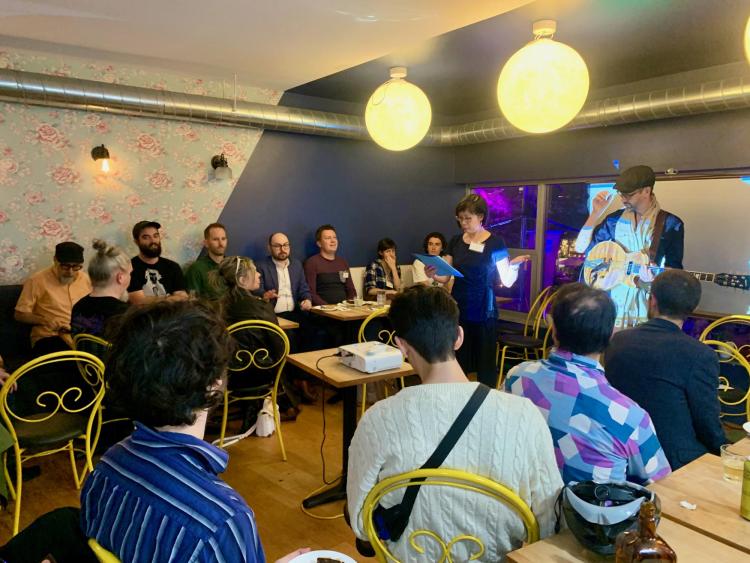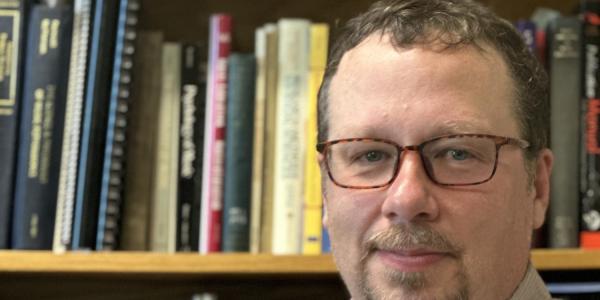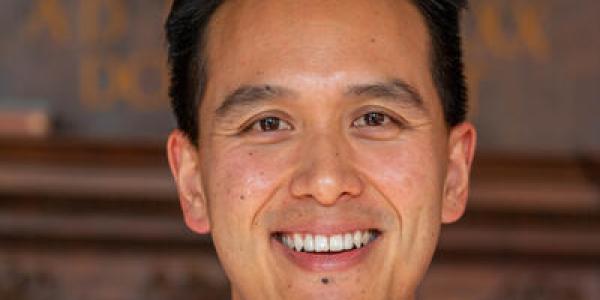 College of Music Professor of Music Theory Daphne Leong.
College of Music Professor of Music Theory Daphne Leong.We all know about rhythm in music: Just count to four. Accent the second and fourth beats, bob your head in time and shake those shoulders. If it’s in three beats, start waltzing. Simple, right? Well, guess again. Do you know about asymmetrical meters, ametric music, polymeter, metric modulation, timeline notation and feathered notes?
When it comes to 20th- and 21st-century music, Professor of Music Theory Daphne Leong—along with her colleagues in the world of rhythm in music performance and scholarship—engages in intense research and endless experimentation which brought her to Montreal’s McGill University for a recent residency. In the midst of it, she served as director of a three-day conference in September, “Rhythm in Music since 1900.”
 Leong introduces Miles Okazaki—guitarist and composer, Princeton University—at last month’s “Rhythm in Music since 1900” conference, Schulich School of Music, McGill University.
Leong introduces Miles Okazaki—guitarist and composer, Princeton University—at last month’s “Rhythm in Music since 1900” conference, Schulich School of Music, McGill University.“It was all about rhythm in concept and practice,” says Leong. “We brought in performers from different genres—jazz, rock, shakuhachi (a traditional Japanese flute). We had a fantastic lecture-recital on how to understand and perform rhythm in Iannis Xenakis’ music. It was a collaboration among performance, scholarship and pedagogy.” While at McGill, she held the title of Distinguished Visiting Professor and Schulich Dean’s Chair in Music. Leong has served on our faculty at the CU Boulder College of Music since 2000.
 McGill percussionists perform Xenakis’ “Peaux.”
McGill percussionists perform Xenakis’ “Peaux.”A native of Saskatchewan, where she earned an undergraduate degree in piano performance, Leong continued her studies at the Eastman School of Music before arriving in Boulder. Growing up in Canada proved helpful, incidentally, since the start of her McGill residency in January kicked off with record snowfall. No biggie for her.
Good thing she was able to get around in all that nasty weather, since Leong says she was kept very busy in Montreal. Besides planning and directing all the activities of the heavily attended international conference, she also managed to teach a graduate seminar and collaborate with the Centre for Interdisciplinary Research in Music Media and Technology (CIRMMT), a hi-tech facility located on the McGill campus. “I designed a pilot experiment for them that involves performers,” she says.
Leong shares about the wide-ranging subject covered in the September conference at McGill, beginning by voicing a seemingly simple question: “How do we understand rhythm?” She follows up her question with another: “Do we play rhythm exactly as written?” Of course, there’s more to it than that. “All composers are open to interpretation,” she reminds us, also referencing some of the rhythmically inventive “old-school” composers of the last century: György Ligeti, Conlon Nancarrow, Steve Reich and others. She further mentions the new generation of music makers of the current century—ones who are moving beyond the boundaries pushed by those earlier pioneers—, giving special attention to fellow Saskatchewanian Nicole Lizée, a featured participant in the McGill conference.
Now back in Boulder, Leong isn’t done traveling. In early December, she’s off to California to join Takács Quartet members in a Bartók symposium, presented in conjunction with the quartet’s complete Bartók series at San Jose State. “This won’t be held just with academics in attendance,” she stresses. “Members of the public will be there, too, providing their impressions.”




